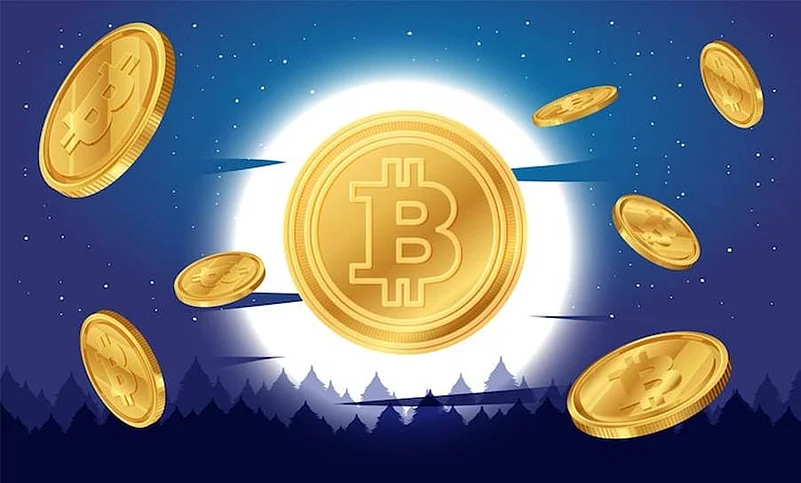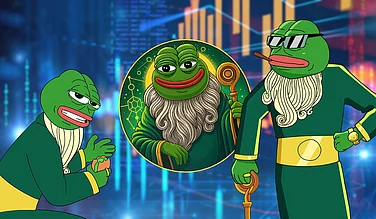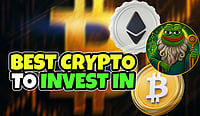For years, the financial world has been split in two. In one corner, you have the regulated, centralized world of exchanges where you can buy tokenized stocks and real-world assets (RWAs). In the other, you have the permissionless, innovative world of Decentralized Finance (DeFi), where you can lend, borrow, and earn yield.
The assets in one world have been trapped, unable to access the opportunities in the other. That is about to change.
The integration of tokenized assets with DeFi protocols, all controlled through a user-owned Web3 wallet, represents the final bridge between these two universes. It's a system where you can buy a tokenized asset on a secure exchange, move it to your personal wallet, and put it to work in the global DeFi ecosystem. This is the story of how that integration works and why it's the future of finance.
The Three Key Players in the New Ecosystem
The Exchange (The On-Ramp): Acts as the secure, regulated gateway where real-world assets are tokenized and first made available. It provides the initial trust and liquidity.
The Web3 Wallet (The Vehicle): This is the user-controlled vehicle that transports the asset from the centralized world of the exchange to the decentralized world of DeFi. It represents true ownership.
The DeFi Protocol (The Destination): This is the open financial marketplace where the asset can be put to work—used as collateral, supplied to a lending pool, or traded on a decentralized exchange.
Why Integration is Important
Tokenized assets, DeFi, and Web3 wallets coming together is not merely a technical feat—it's a strategic transformation.
Here's why integration is important:
Advantages of Integration
Increased investment opportunities: Users can access both traditional and digital assets from a single interface.
Enhanced liquidity: Tokenized assets can be traded 24/7 and utilized in liquidity pools, enhancing market depth.
Financial inclusion: Fractional ownership enables smaller investors to have access to high-value assets.
Interoperability: Smooth transfer of assets among exchanges, wallets, and DeFi platforms.
User empowerment: With Web3 wallets, users are the authentic owners and controllers of their assets.
Challenges to Overcome
Integration, however, has challenges:
Regulatory uncertainty: Tokenized assets are susceptible to being treated as securities, prompting compliance issues.
Smart contract risk: DeFi protocol bugs or vulnerabilities can put users and exchanges at risk.
Custody complexities: Tokenized real-world assets need strong, typically hybrid custody models.
User experience gaps: Users find Web3 interactions (e.g., gas fees, private keys) complex.
Table: Pros and Cons of Integration
Pros | Cons |
Broader asset classes | Complex regulatory oversight |
Enhanced liquidity | Security vulnerabilities in DeFi |
Fractional investment | Limited user education |
Interoperability with Web3 wallets | Integration and technical overhead |
Competitive differentiation for exchanges | Market liquidity risks |
The User Journey: From Dormant Asset to Productive Collateral
The integration of these three pillars—the exchange, the wallet, and the DeFi protocol—creates a seamless user journey that unlocks the dormant value of any asset. Here’s how it works in three simple stages:
Stage 1: The Purchase (On a Regulated Exchange)
It starts in a familiar, regulated environment. An investor buys a tokenized asset—let's say a token representing a fraction of a commercial real estate property—on a next-generation exchange that supports RWAs. The exchange provides security, compliance (KYC/AML), and initial liquidity. At this stage, the asset is held in a custodial wallet on the exchange.
Stage 2: The Liberation (Into a Web3 Wallet)
This is the crucial bridge. The exchange allows the user to withdraw their tokenized real estate asset directly to their own non-custodial Web3 wallet (like MetaMask or Ledger). The moment the asset arrives in their wallet, the user has true, self-sovereign ownership. They are no longer just a customer of the exchange; they are the sole controller of their property.
Stage 3: The Activation (In a DeFi Protocol)
With the asset now in their personal wallet, the user can connect to a DeFi lending protocol like Aave or MakerDAO. The protocol recognizes the tokenized real estate as valid collateral. The user can then deposit their asset into a smart contract and borrow stablecoins against it, all without asking for permission from a bank. The asset is no longer just sitting there; it's generating liquidity and enabling new financial opportunities.
The Place of Crypto Exchanges in the Middle Layer
In this merged model, crypto exchanges exist as the middle connective tissue linking traditional finance and decentralized worlds.
They offer:
Liquidity and price discovery for tokenized assets
Regulated-to-open market custody solutions
Protection for users through compliance and insurance solutions
Gateways to DeFi through safe interfaces
By being the middle layer, exchanges can maintain their relevance in a decentralized future—going beyond being mere trading venues to being access points to DeFi.
Strategic and Operational Considerations for Effective Implementation
To thrive, exchanges need to grapple with several strategic and operational considerations:
Standardization
Use accepted token standards (ERC-20, ERC-3643, BEP-20) to make wallets and DeFi compatible.
Interoperability
Enable multi-chain ecosystems for cross-chain transfers, bridging, and liquidity aggregation.
Risk Management
Utilize sophisticated analytics to track collateral value, levels of liquidity, and on-chain risk exposure.
Transparent Governance
Make governance procedures (e.g., listing new tokens, modifying smart contract parameters) transparent and possibly decentralized.
Liquidity Partnerships
Partner with institutional market makers and DeFi liquidity providers to ensure active markets.
Compliance Technology
Apply blockchain analytics tools for real-time suspicious activity monitoring and regulatory reporting.
Practical Benefits to Users and Institutions
When this integration matures, users and institutional investors have quantifiable benefits:
For Retail Users:
Access to fractional investment in high-value assets
Simple switching between CeFi and DeFi ecosystems
Straight yield opportunities from DeFi without middlemen
For Institutional Players:
Efficient tokenized product issuance and management
Liquidity sourcing via both exchange and DeFi routes
Compliant access to blockchain-based finance
This two-way architecture forms a "best of both worlds" experience: the stability and compliance of centralized exchanges, and the innovation and openness of decentralized finance.
The Road Ahead: Creating a Unified Digital Finance Ecosystem
The intersection of tokenized assets, DeFi protocols, and Web3 wallets is the inevitable trajectory of finance towards openness and inclusivity. As tokenization moves to new asset classes—bonds, carbon credits, or intellectual property—exchanges that align with interoperability will be the leaders.
Soon, users may:
Exchange tokenized real estate on an exchange,
Move it to their Web3 wallet, and
Stake it in a DeFi lending pool—all within a single frictionless action.
This is not a distant vision but a reachable step towards the next generation of blockchain finance.
Conclusion
Incorporating tokenized assets with DeFi protocols and Web3 wallets is revolutionizing the way assets are created, owned, and used. For crypto exchanges, incorporating such an integration is a chance as well as a mandate—to merge centralized efficiency with decentralized innovation.
By adhering to formal implementation procedures—defining assets, constructing tokenization frameworks, facilitating wallet connectivity, ensuring compliance, and user education—exchanges can develop robust, user-focused ecosystems.
These systems democratize access to international finance and future-proof the exchange function within an emerging decentralized economy.
By essence, the interaction of tokenized assets, DeFi protocols, and Web3 wallets forms the basis of a fully borderless and programmable financial infrastructure—one in which ownership, utility, and liquidity exist in beautiful harmony on-chain.
FAQs: Common Questions from Investors and Users
Q1. What is the main goal of integrating tokenized assets with DeFi and Web3 wallets?
The goal is to enable seamless movement and utility of assets—allowing users to trade, lend, stake, or borrow using tokenized representations of real or digital assets directly through their Web3 wallets.
Q2. Are tokenized assets the same as cryptocurrencies?
Not necessarily. Cryptocurrencies like Bitcoin or Ether are native digital assets, whereas tokenized assets represent ownership rights to real-world items such as real estate or equity.
Q3. Can tokenized assets be used as collateral in DeFi?
Yes. Once compliant token standards and valuation mechanisms are in place, tokenized assets can be accepted as collateral for loans or liquidity in DeFi protocols.
Q4. How do Web3 wallets help users in this process?
Web3 wallets act as bridges, letting users hold tokenized assets securely, connect to DeFi apps, and manage all transactions without relying on centralized intermediaries.
Q5. Are there any risks involved?
Yes. Risks include regulatory uncertainty, smart contract bugs, and liquidity shortages. Users must understand the security model of both the exchange and the connected DeFi protocol.
Q6. What role do crypto exchanges play in ensuring safety?
Crypto exchanges act as compliance layers—offering KYC/AML checks, secure custody, and insurance. They also integrate with trusted DeFi protocols to minimize exposure to unverified contracts.

























